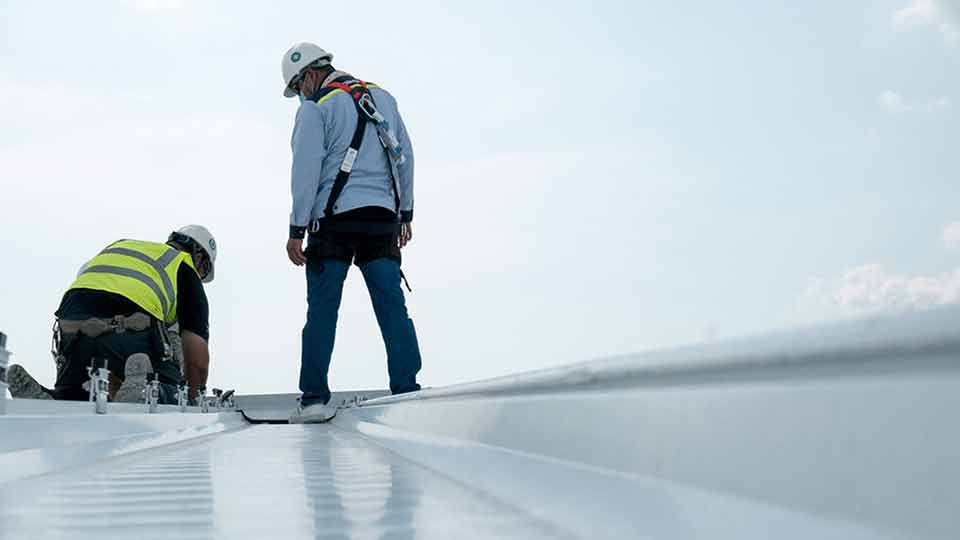Safety With Roof Anchors
The idea of health and safety isn’t always a welcome one. What is essentially an effort to keep people safe has gained a reputation for unnecessary coddling and unnecessary rules, and that can lead to people pushing back against the idea of safety in situations when they really shouldn’t, even when it is a legal requirement. A prime example of this is working on a roof without any safety measure in case you slip and fall.
This is where roof anchors come in.
Roof anchors provide a structurally sound point where a safety harness can be attached as a precaution against falling, and are an essential piece of safety equipment when working on a roof or another high place. These can be both permanent, temporary, or mobile.
Permanent or Temporary?
For one-time situations where the roof anchor is not going to be used again in the foreseeable future, a temporary solution can be used, or even a permanent one that is left in place and forgotten about. Bear in mind that if you do leave a roof anchor in place and forget about it, you won’t be able to use it again years down the line. For one thing, it may have deteriorated and no longer be safe, but also there are legal requirements for roof anchors that are to be regularly used.
For re-useable roof anchors, you will need to have them inspected and certified annually to ensure they are still up to the job. This is to ensure that things like rust and erosion have not made the anchor point unsafe, and it is much better to find this out during an inspection than the next time it gets used!
Commercial Roofs
In a way, commercial roofs represent the simplest potential solution, since they are often the roofs that need regular maintenance work. If you know someone is going to have to climb around on your roof on a semi-regular basis, it makes much more sense to have a permanent roof anchor installed, since the cost of annual inspections is less than using a temporary solution each time.
With a permanent roof anchor in place, anybody carrying out work on the roof can simply connect their safety harness to the existing anchor point, and they are good to go. Temporary solutions like parapet clamps will need installing before any work can commence, and removing after the work is complete, of course.
It is essential to ensure that permanent roof anchors are properly installed, as they will need to penetrate the roof in order to connect to the structural components of the building, which makes rainwater leakages a potential risk if the installation was not carried out correctly.
Residential Roofs
Residential roofs present a different problem. It has not always been a requirement that work being carried out on residential properties have height safety measures in place, but that is no longer the case. As a general rule, anyone working at the height of two metres or more above the ground should have a height safety measure in place. Some single-storey homes may fall under this mark, but most will not.
Because it was previously not required, there has not historically been a great deal of solutions for residential height safety, as the roofing found in homes is often different. For example, flat roofs are common in the industrial and commercial world, usually lined with asphalt or metal. Residential homes are far more likely to have a gable or hip roof and be finished with tiles or shingles. It is not as straightforward to attach a roof anchor to a sloping tiled roof, especially without damaging the tiles. Nowadays, there are roof anchors that are designed to sit on the ridge of the roof to get around the problems of residential roofing.
DIY Roof Repair
Laws regarding health and safety are typically there to protect employees and contractors. If you were heading up onto your roof to do a bit of DIY repair, you would likely not be legally bound to adhere to any kind of height safety—unless you were contracting yourself to do the work.
That being said, these rules and regulations exist for a reason, and climbing around on a roof—particularly a residential roof—is a dangerous activity, no matter how experienced you are. Ultimately, it is better to hire a professional to undertake this kind of work for you, especially if you are not experienced in roof repair. But if you can’t be talked out of doing it yourself, you should absolutely make use of roof anchors or some other form of height safety.
Standing Seam Roofs
Standing seam roofs are a type of metal roofing that is mostly smooth, with only a few small ridges where the seams between panels are. This kind of roof presents a unique problem. It is considerably easier to lose your footing thanks to the smooth, metal surface, but traditional roof anchors that fasten into the wooden structure of the roof are not viable, as they would damage the roof.
Fortunately, there are options here also. Clamp-style roof anchors are a good option for when there are suitable areas to clamp to. There are also non-penetrating roof anchors that use counterweights to remain in place, though these would only be suitable for flat sections of roof.
Final Thoughts
Roof anchors are an essential safety measure any time you are working at a significant height which, as we mentioned above, should be considered anything over two metres from the ground. There are plenty of variants on the basic roof anchor design, both for commercial and residential use, and to suit a wide range of roof styles.
Anybody carrying out roofing work in a professional capacity is legally required to use a roof anchor (or similar height safety solution), whether they are employed by a huge corporation or a self-employed contractor. For people who are embarking on a little DIY roofing, we would advise you don’t. Call the experts. But if you aren’t going to let the professionals take care of it, don’t risk your health—and possibly life—by thinking roof anchors are just a pointless health and safety rule.




